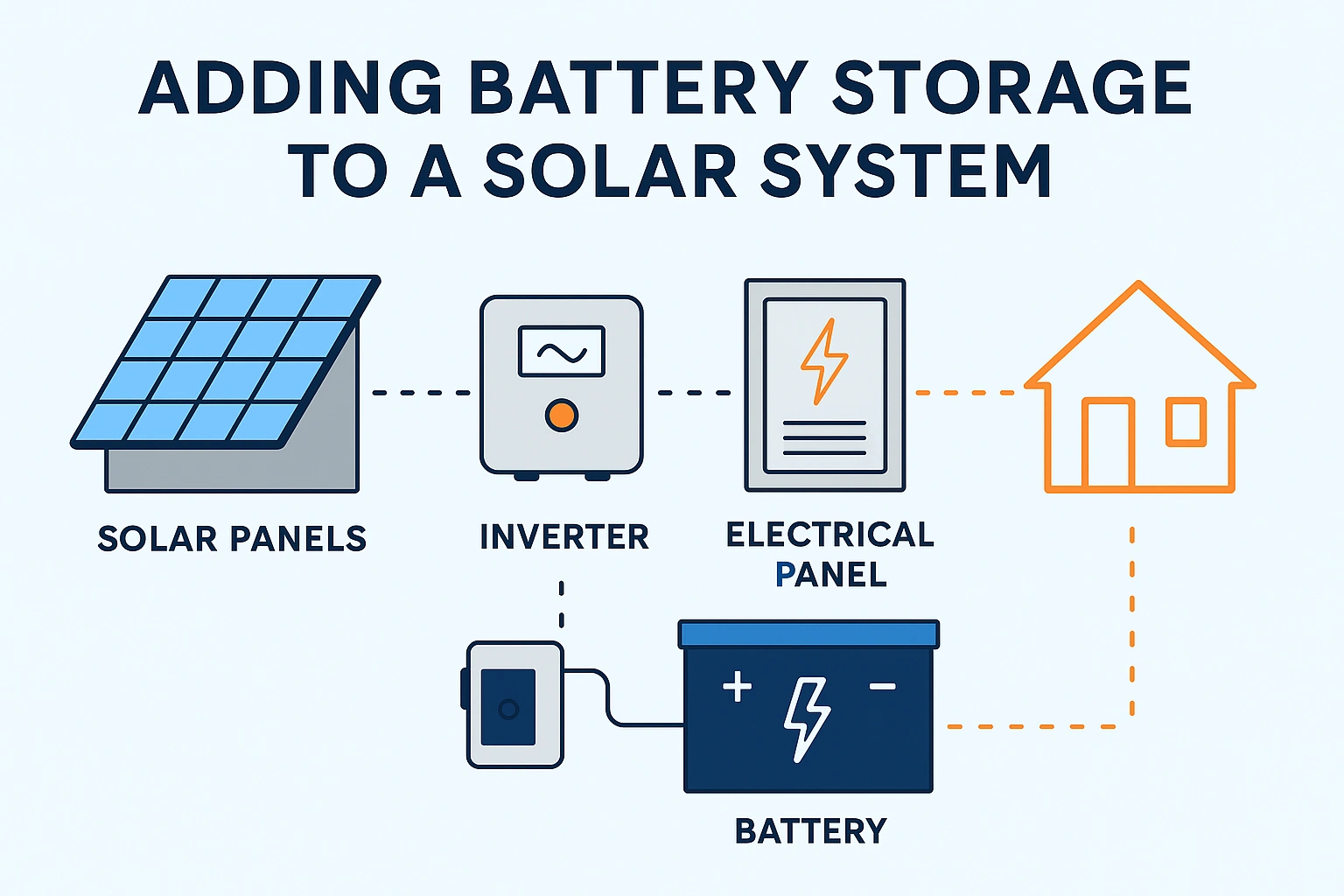Introduction
Storing solar energy in a battery allows homeowners and businesses to maximize the use of their solar panels—even when the sun isn’t shining. Whether you want backup power for outages or to go off-grid entirely, solar battery storage provides a reliable and efficient solution. In this guide, we’ll explain how it works, how to choose the right system, and how to maintain it for long-term performance.
What Is the Best Battery to Store Energy from Solar Panels?
The best battery depends on your energy needs, budget, and installation environment. Common battery types include:
-
Lithium Iron Phosphate (LiFePO₄) – Long lifespan (up to 6000 cycles), high safety, ideal for home and commercial use.
-
Lithium Nickel Manganese Cobalt (NMC) – Higher energy density, suitable for space-limited installations.
-
Lead-acid (AGM or Gel) – Lower upfront cost, but heavier and shorter lifespan.
For most residential and commercial applications, LiFePO₄ is considered the best due to its high cycle life, stability, and low maintenance.
How Much Battery Storage Do I Need for Solar Panels?
Battery capacity is measured in kilowatt-hours (kWh) and depends on your daily energy consumption and backup needs.
| Daily Usage (kWh) | Recommended Battery Size |
|---|---|
| 3–5 kWh/day | 5–10 kWh battery |
| 6–10 kWh/day | 10–15 kWh battery |
| 11–15 kWh/day | 15–20 kWh battery |
Tip: Multiply your daily kWh usage by the number of backup days you want. Add 10–20% safety margin.
How Do I Add Battery Storage to My Solar System?
There are two main ways to integrate batteries:
-
DC-Coupled Systems: More efficient, better for new installations.
-
AC-Coupled Systems: Easier to retrofit into existing grid-tied solar systems.
Components you’ll need:
-
Battery pack (e.g., 200kWh Commercial Solar Battery)
-
Hybrid inverter or battery inverter
-
Charge controller (for DC systems)
-
Battery management system (BMS)
Professional installation is highly recommended for safety and compliance.
Where Should Solar Batteries Be Stored?
Ideal locations are:
-
Indoors, in cool, dry, and ventilated areas like garages or utility rooms
-
Outdoor enclosures must be waterproof and temperature-controlled (IP65 rated or higher)
Avoid:
-
High-humidity areas
-
Direct sunlight
-
Freezing or overheating conditions
What Is the Lifespan of a Solar Battery?
Battery lifespan depends on type and usage:
| Battery Type | Cycle Life | Expected Years |
|---|---|---|
| LiFePO₄ | 3000–6000+ cycles | 10–15 years |
| NMC | 2000–4000 cycles | 8–12 years |
| AGM / GEL | 500–1000 cycles | 3–5 years |
Proper maintenance and depth-of-discharge (DoD) control can significantly extend lifespan.
How Do You Maintain Solar Battery Storage?
-
Keep charge level between 20%–90% for lithium batteries
-
Store at temperatures between 15°C–30°C (59°F–86°F)
-
Check connections and battery logs monthly
-
Avoid over-discharge or overcharge—use a reliable BMS
-
For lead-acid batteries, check electrolyte levels periodically
How Long Will a 5 kWh, 10 kWh, or 15 kWh Battery Last?
The runtime depends on your energy load. Here’s a general estimate:
| Battery Size | Load (kWh/day) | Estimated Duration |
|---|---|---|
| 5 kWh | 2.5 kWh/day | ~2 days |
| 10 kWh | 5 kWh/day | ~2 days |
| 15 kWh | 7.5 kWh/day | ~2 days |
Conclusion
Storing solar energy in a battery lets you take control of your energy usage, lower electricity bills, and ensure power availability during outages. Whether you need a compact 5 kWh system or a large-scale 200 kWh battery bank, knowing the right size, type, and installation method is crucial.
Ready to build your solar battery system?
Contact our team for custom lithium battery solutions tailored to your energy needs.





